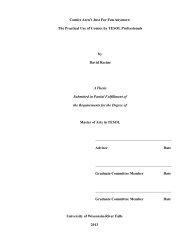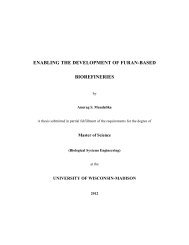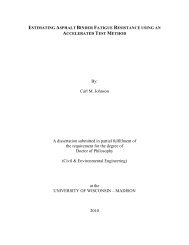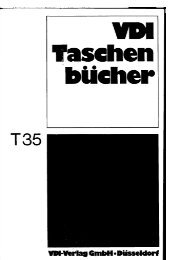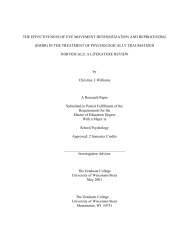William Stratton Ph.D. Thesis - MINDS@UW Home
William Stratton Ph.D. Thesis - MINDS@UW Home
William Stratton Ph.D. Thesis - MINDS@UW Home
You also want an ePaper? Increase the reach of your titles
YUMPU automatically turns print PDFs into web optimized ePapers that Google loves.
1.05 Fluctuation Electron Microscopy<br />
FEM uses spatial fluctuations in diffraction from nanoscale volumes to detect MRO in<br />
amorphous materials 66,74 using a TEM or STEM. In amorphous materials, homogeneous atomic<br />
structure means homogeneously random or maximally disordered and heterogeneous means<br />
more ordered. If the structure is homogeneous, the spatial fluctuations in diffraction will be<br />
small. If the structure is heterogeneous, the spatial fluctuations in diffraction will be large. At<br />
the other extreme of order, a homogeneous single crystal will show essentially zero fluctuations.<br />
To date, FEM has shown fundamentally new medium-range structure information in several<br />
different amorphous systems. Initially FEM was used to study amorphous semiconductors<br />
72,73,75 , but recently it has been used to study amorphous oxides 76,77 , amorphous carbon films 78 ,<br />
and amorphous metals 40,79 .<br />
FEM is done by systematically varying k to find conditions that excite Bragg-like<br />
diffraction from regions with ordered atomic structure. The diffracted intensity from an ordered<br />
region scales as the square of the number of atoms in the region, leading to a particularly bright<br />
spot in the image. If the beam falls between strong diffracting conditions, the ordered regions<br />
will be particularly dark. All of the images, however, consist of speckle - random patterns of<br />
black and white dots, the intensity and position of which change with k - so a quantitative<br />
measurement of “bright” and “dark” is required. In order to distinguish meaningful MRO from<br />
random structural fluctuations, Treacy and Gibson 74 defined the normalized image variance,<br />
14



